Body material: Aluminum(GB-ADC12)+PC(Japan Brand)
Power supply: USA Brand High Efficient Solar Panel
Battery: NI-MH1.2V/600MAH; Lithium battery3.2V/500MAH(Made in Japan);
Resistance: >30T
LED Color: White, Yellow, Blue, Red, Green
Size: L125mm*W107mm*H26+50mm
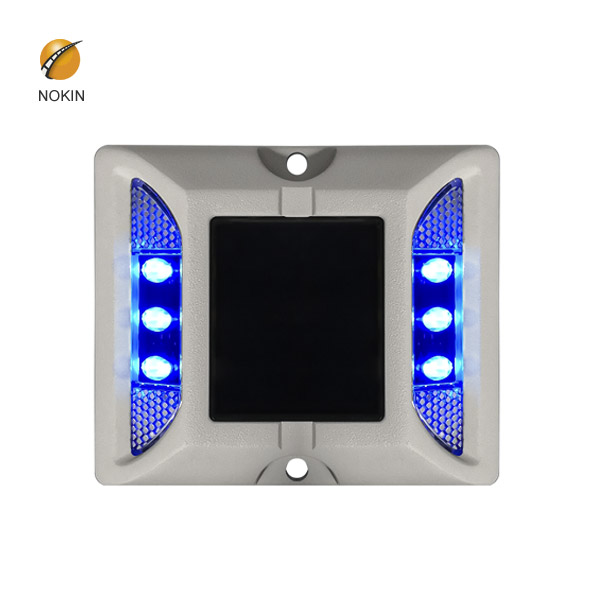
Body material: Casting Aluminium alloy +PC
Power supply: 5V/80MAH Mono crystalline silicon
Battery: Lithium battery3.2V/1000MAH
Resistance: >40T(can be installed in the middle of road)
LED Color: White, Yellow, Blue, Red, Green
Size: φ125*50mm
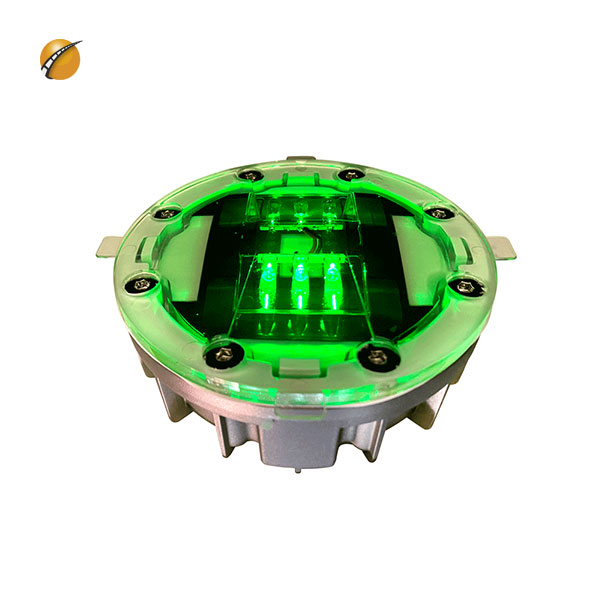
Body material: Hi-pressure Casting Aluminium alloy
Power supply: Solar panel(monocrystalline 2.5V/0.2W)
Battery: NI-MH 1.2V/800MAH or lithium battery
Resistance: >20T(static)
LED Color: White, Yellow, Blue, Red, Green
Size: L104*W104*H20mm
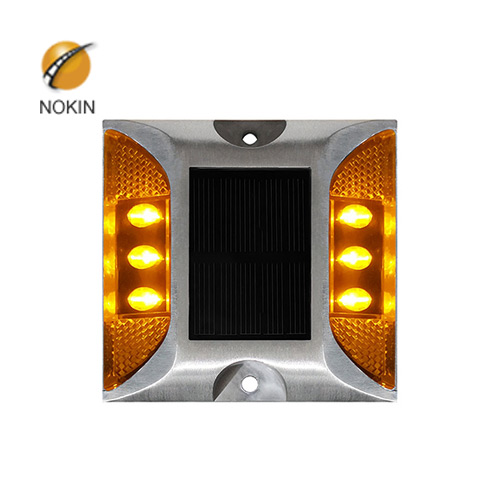
Body material: ABS
Filling: Epoxy+Quartz
Lens Material: PMMA
Colors: White, Red, Yellow, Green, Blue
Size: 100*100*18mm

Body material: ABS
Reflector type: Double side/Single side
Lens Material: PMMA
Colors: White, Red, Yellow, Green, Blue
Size: 116*82*18mm
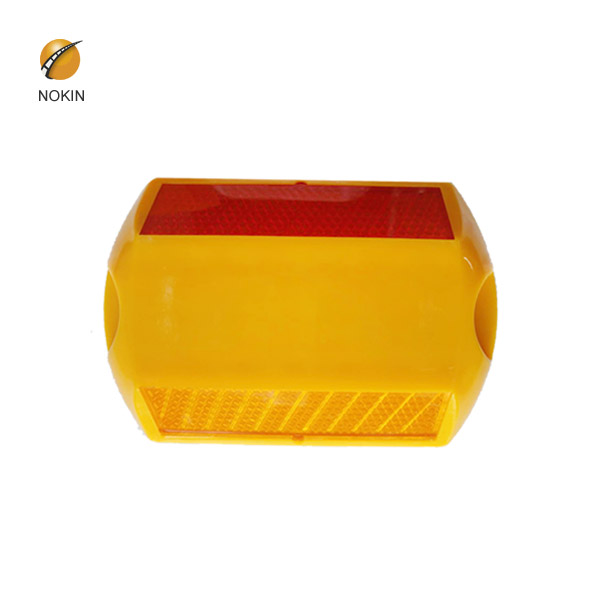
Body material: Aluminium
Filling: Epoxy+Quartz
Lens Material: PMMA
Colors: White, Red, Yellow, Green, Blue
Size: 100*100*20+50mm
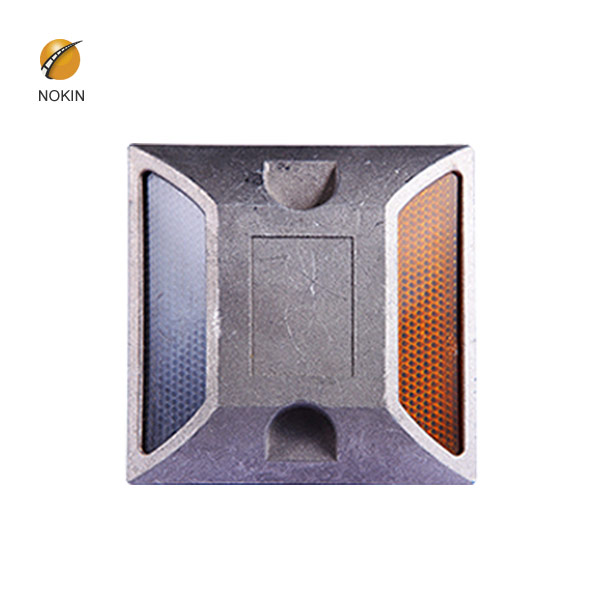

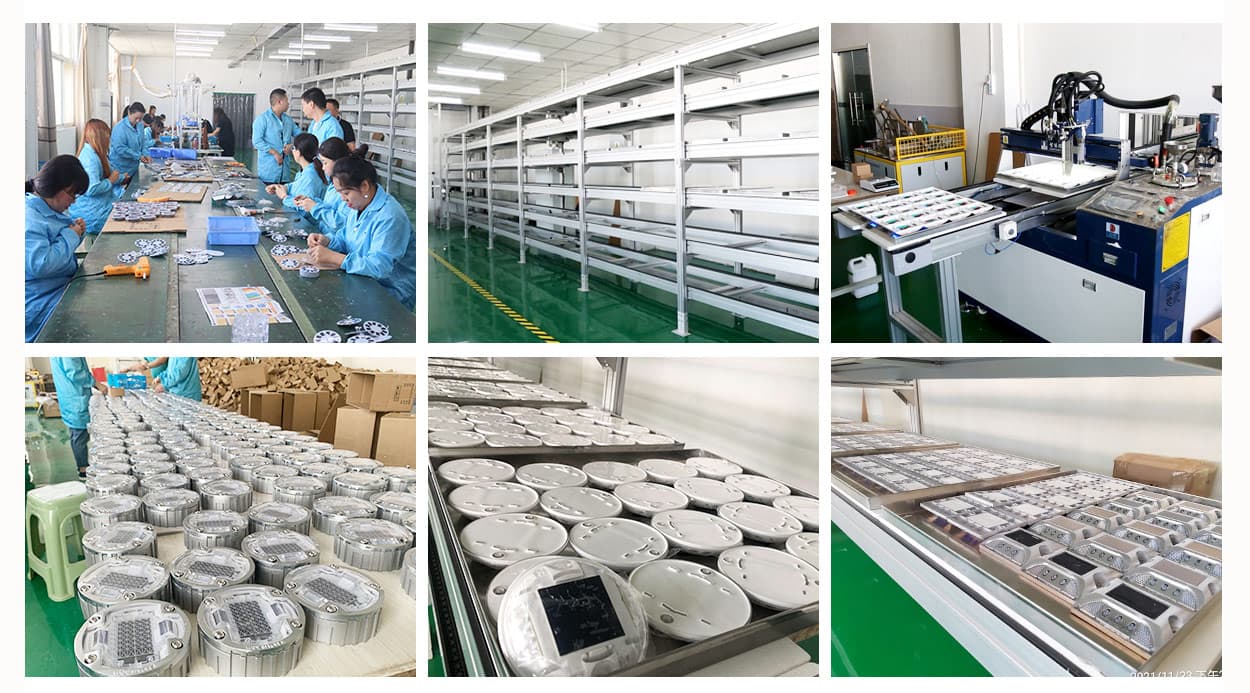

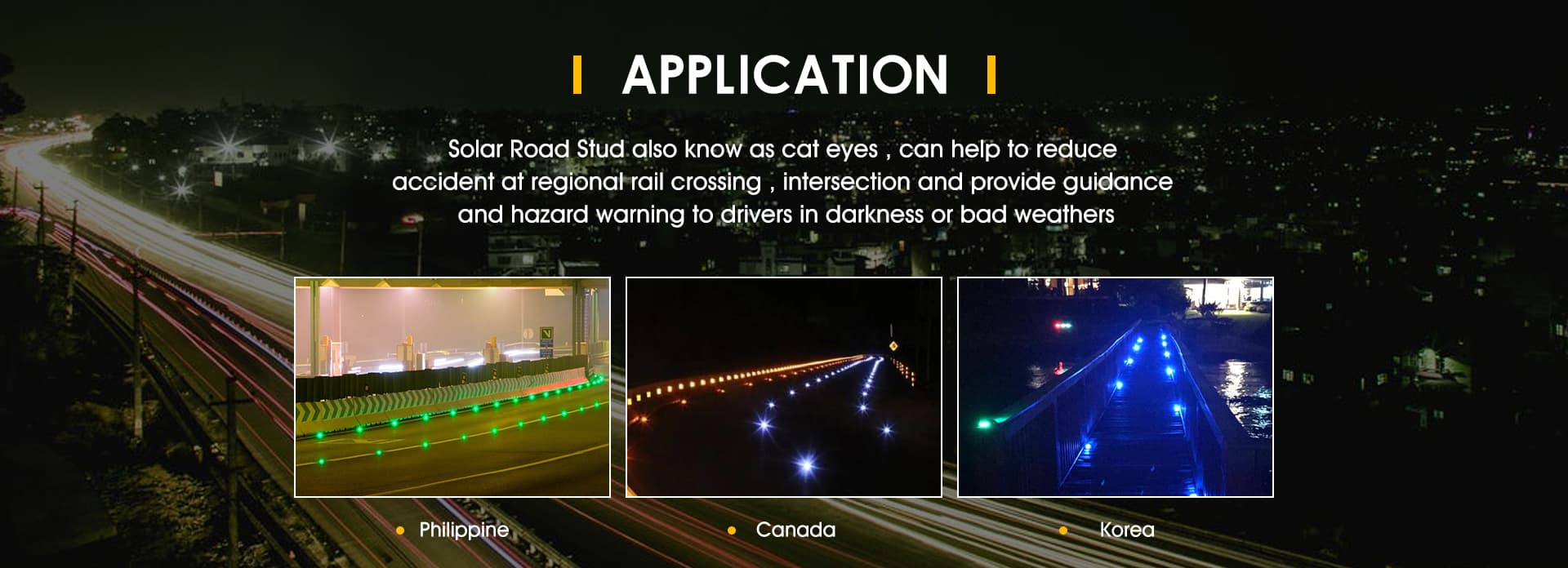
.jpg)
6.3 Road studs may be used with most other longitudinal white lines (see direction 31(5), (6) and (7)). They are always used on motorways, and are recommended for use on high speed all-purpose roads, even when street lighting is provided. 6.4 For guidance on the use of road studs at the change from dual to single carriageway, see paras 4.58 and
.jpg)
White studs are situated on the centre line of a carriageway to separate lanes. Red - These indicate the left-hand side of the carriageway and show a “line that should not be crossed”. Green - These are used on dual carriageways and motorways to indicate a slip road entrance or a layby.
.jpg)
International standards in reflective road studs. New Zealand conforms to the same standards as the UK and Australia on the positioning of road studs by using white studs to mark the centre line of a single carriageway, or to delineate lanes on a dual carriageway or motorway.
.jpg)
Between carriageway and central reservation The studs on the left of the inside lane are reflective green for exiting the motorway at the proper exits on the left-hand side. The red reflective ...
.jpg)
Motorway reflective stud placement. Motorway or dual carriageway reflective studs (or cat’s eyes as they are also referred to) are designed to be most effective in poor light conditions by reflecting light back to the driver to signify which part of the motorway they are driving on, or where they might need to exit.
.jpg)
Mar 17, 2019 · White studs mark the lanes or the middle of the road, red studs mark the left edge of the road, amber studs mark the central reservation of a dual carriageway or motorway and green studs mark the
.jpg)
White studs are situated on the centre line of a carriageway to separate lanes. Red - These indicate the left-hand side of the carriageway and show a “line that should not be crossed”. Green - These are used on dual carriageways and motorways to indicate a slip road entrance or a layby.
.jpg)
Reflective road studs. Reflective road studs are used to mark the lanes and edges of the carriageway. Each colour marks a different part of the road: White studs mark the lanes or the middle of the road; Red studs mark the left edge of the road; Amber studs mark the central reservation of a dual carriageway or motorway
.jpg)
The studs offer a uni or bi-directional function, with uni directional studs typically being used for slip road, multiple lane separation (dual carriageway or motorway) or edge of road delineation. In contrast, bi-directional studs are used in the centre of single lane carriageways to be seen by drivers travelling in either direction.
.jpg)
Reflective road studs may be used with white lines. White studs mark the lanes or the middle of the road. Red studs mark the left edge of the road. Amber studs mark the central reservation of a dual carriageway or motorway. Green studs mark the edge of the main carriageway at lay-bys and slip roads.
.jpg)
Motorways, freeways and dual carriageway roads always have road studs. Single carriageway two-way roads should have RRPMs to supplement the dividing line if the annual average daily traffic (AADT) (see definition in Section 1.6) is in excess either 3,000 vehicles on rural roads or 6,000 vehicles on urban roads.
.jpg)
Retro-reflective road studs, The track consisted of four repetitions of the same portion of a standard French single undivided carriageway, ... unlit road (left) and studs (ri ght).
.jpg)
Road Studs RPM Manufacturers in China, We are Manufacturer, Supplier of Raised Pavement Markers, NOKIN Cat Eyes,Solar Road Studs,Aluminum Road Stud.reflect incident light by using a retro reflector, thus reversing the direction of visible light from vehicle headlights and returning it along a parallel path.
.jpg)
Jan 27, 2016 · Road Studs Fleming & Company. Abandoned Excavator left in woods for 16 years- Will it start ?? ... 63 Road Signs Highwaycode UK - Duration: 4:53. ESL and Popular Culture Recommended for you. ...
.jpg)
-White reflective lane markers: mark the lanes or the middle of the road.-Red reflective lane markers: mark the left edge of the road.-Motorway reflective lane markers: mark the central reservation of a dual carriageway or motorway.-Green reflective lane markers: mark the edge of the main carriageway at lay-bys and slip roads.